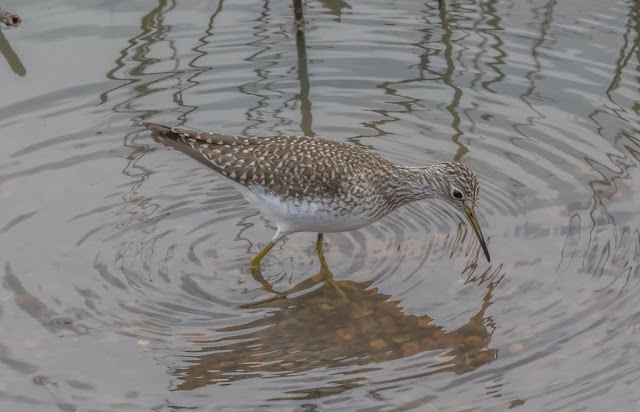Between the Lakes National Recreation Area, Kentucky
Hairy Woodpecker
The Hairy Woodpecker has more than 17 recognized subspecies. Males have a red hind crown patch.
They are the most prolific woodpecker in all of North America.
Solitary Sandpiper
Though first described in 1813, its nest was not discovered until 1903.
Until 1903, the eggs and young of the Spotted Sandpiper were misidentified as those of the Solitary Sandpiper.
Its habit of nesting in the abandoned nests of other birds is unique among North American shorebirds, which generally nest on the ground.
Yellow-breasted Chat
Throat expanded as he sings his beautiful “gurgling” song.
White spectacles and black lores and bill
Unlike most warblers, this species often mimics the calls of other birds.
Its large size and stout bill, long tail, and distinctive display flight, hovering with slow, deep-flapping wings and dangling feet, make it seem more like one of the mockingbirds or thrashers.
































































